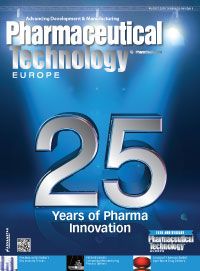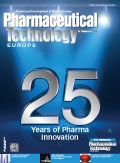Collaboration and Innovation in European Medicine Regulation
Pharmaceutical Technology Europe
The European Union has developed a system for evaluating, approving and monitoring the safety of medicines that has also encouraged innovation.

European regulation of pharmaceuticals has, since the foundation of the European Union around 60 years ago, been a story of medicines being controlled in a collaboration between regulators at the EU and national levels. In recent years, this collaboration has been extended to involve not just the regulators themselves but also other stakeholders such as large, medium and small pharmaceutical companies, prescribers and patients. A major objective of the European pharmaceutical legislation, particularly at the EU level, has been to support the competiveness of the European pharmaceutical industry. This aim has become more urgent with the industry coming under pressure from globalisation. Over the past 40 years, Europe’s global share of new chemical entities (NCEs) has almost halved to around a third (1).
Thalidomide tragedy
The importance of the future of Europe’s pharmaceutical sector was evident from the beginning of the EU’s legislative activity in the area. In the 1950s, thalidomide, a sedative used to treat morning sickness in pregnant women, caused limb deformities and other deficiencies in thousands of new-born babies. This tragedy resulted in EU member states bringing in a variety of regulatory controls of medicines, with many setting up their own licensing agencies. The thalidomide tragedy also prompted the EU to take a lead in introducing stricter medicines regulations across Europe both to protect public health and also to prevent a fledgling single market turning into a fragmented one, which would undermine the competiveness of the European pharmaceuticals industry.
In 1965, the EU Council, representing member state governments, approved the Union’s first piece of legislation on pharmaceuticals (2). It defined what a “medicinal product” was, stipulated that a drug must be approved for marketing on the basis of evidence of quality, safety and efficacy and provided basic rules on testing requirements.
Standardisation directive
Ten years later, the EU passed a second major pharmaceuticals directive (3), whose basic principles, like with other EU directives, had to be transposed into national legislation by the member states. This directive set out detailed rules for standardising testing and introduced a system of multi-state mutual recognition under which an authorisation of a medicine in one state could be automatically accepted by other EU states.
The directive also set up a Committee for Proprietary Medicinal Products (CPMP) in the European Commission, with the job of supervising the new multi-state system and giving its own opinion on medicines that had triggered disagreement between states. The creation of the CPMP was significant. Not only was it a central group of scientific experts (with access to 4000 specialists in the EU regulatory network), its members came from member states. It was to provide the basis for a future EU pharmaceutical regulatory system in which a central body and national authorities combined to form a Europe-wide network for controlling medicines.

Pharmaceutical Technology Europe25th Anniversary Issue
By the late 1980s, it was clear that the multi-state scheme was not working. A Commission study (4) claimed that it was “hardly used by the pharmaceutical industry.” Only an average of five to six applications for multi-state approval were being made annually (4).
In 1987, the role of the CPMP was extended to cover high-tech medicines, especially those derived from biotechnological processes. National authorities were obliged to refer these products first to the committee for its opinion before making their own decisions on authorisation. This directive was a landmark because for the first time, a regulatory body at the EU level was being used to help stimulate the development of innovative medicines based on new technologies.
Two years later, the European Commission signalled its intention to impose a tighter grip on production standards when it issued its first guideline on good manufacturing practice (GMP). In 1991, the EU approved a directive (5) obliging all member states to “ensure that manufacturers (of medicinal products) respect the principles and guidelines of GMP.” In 2003, these GMP rules were considerably strengthened in a directive (6) with more detailed provisions on inspections and stricter requirements for manufacturers, particularly in the operation of quality management systems.
Creation of the European Medicines Agency
The EU took the major step of bringing in a centralised procedure for medicines in a 1993 directive, which would be part of a three-pronged system also comprising the decentralised schemes of mutual recognition and single-state approval. The use of the centralised arrangement was mandatory for biotechnological products and optional for medicines with new active substances. For EU legislators, the Commission and the pharmaceutical industry, the change was seen as a means to reduce the costs of approvals and to remove national trade barriers aimed at blocking competition to domestic drug companies from new technologies. To implement the centralised system, the European Agency for the Evaluation of Medicinal Products (EMEA), whose name was later changed to the European Medicines Agency (EMA), was set up.
“Before EMA existed, small and mid-size companies from outside Europe, and from Europe itself, had to abstain from entering European markets, or to share the (marketing) rights with local companies,” Richard Bergstroem, director general of the European Federation of Pharmaceutical Industries and Associations (EFPIA), Brussels, told Pharmaceutical Technology Europe. “This illustrates the value of having one approval ‘portal’ for Europe,” he added.
At the core of the agency was the CPMP, now called the Committee for Medicinal Products for Human Use (CHMP). Its members came mainly from the member states, underlining the fact that medicines approval remained a matter for a network of licensing bodies. Medicines undergoing centralised approval are initially evaluated separately by a rapporteur and a co-rapporteur who are CHMP members and who may carry out the necessary scientific work in their national agencies. Once the CHMP recommends approval of a medicine, the final decision is taken by the Commission after advice on the matter by its Standing Committee on Medicinal Products for Human Use, which itself comprises experts from the member states.
“This strong interplay with their national counterparts typifies European agencies (like EMA),” explains Ellen Vos, professor of European Union law, Maastricht University, Netherlands (7). “They have been designed to operate as a kind of primus inter pares with the national authorities, instead of being hierarchically placed above (them).”
An EU regulation (8) was passed in 2004 that extended the scope of the procedure. In addition to biotech products, all orphan medicines and those drugs with new active substances for treatment of acquired immune deficiency syndrome, cancer, neurodegenerative disorder or diabetes had to be submitted to centralised approval. Optional access to the centralised system was also extended to non-innovative products, in particular generic and over-the-counter medicines. The 2004 regulation provided a platform for later expansions in the scope both of EU pharmaceuticals legislation and also of the activities of EMA.
EMA’s functions have been extended by a series of new EU laws and other regulatory initiatives. One of the most significant of these was the 2012 legislation (9) on pharmacovigilance, which strengthened EMA’s position in the post-authorisation monitoring. As a result, it is now more involved in the supervision of the full lifecycle of drugs. Rules on post-authorisation variations in medicines have also been made stricter with clarification of which variations, such as changes to production processes, need a complete scientific assessment.
Due to the Falsified Medicines Directive (FMD) (10), which came into force early last year, both EMA and national agencies have had to step up measures to vet the GMP standards of imported APIs, which account for 70% of the European market for active substances. A big new challenge for EMA is the increasing influence of the national health technology assessment bodies (HTAs), which now have their own European network (EUnetHTA). They assess the cost effectiveness of medicines to help governments decide whether and by how much to reimburse them under their publicly funded healthcare systems. The agency sees the necessity for close collaboration with HTAs as part of its work on ensuring patients have access to new medicines. “A strong interaction between regulators and HTAs is critical to enable innovation to reach patients, and ultimately for the benefit of public health,” says Guido Rasi, EMA’s director.
EMA is even more active in ensuring that it keeps up with scientific advances in an effort to ensure it can stimulate rather than hold back innovation. With biosimilars, Europe is now a leader globally. To a large extent, this is due to the availability of a regulatory framework, which first started to be put in place more than 10 years ago. Since then, EMA has issued more than 20 guidelines on or related to biosimilars.
“The current challenge is to make sure the development pathways--guidelines, approval mechanisms, market access procedures--are ready for the latest scientific development,” said Bergstroem. “How will the next generation of products be developed and approved? To answer this question, regulators are part of the solution.”
Medicines regulation in Europe has become not just a matter of evaluating, approving and monitoring the safety of medicines but also of encouraging innovations in medicines and their production processes to meet patients’ needs.
References
1. EFPIA, A vision towards a life science strategy for Europe, accessed 16 July 2014.
2. EC Directive 1965/65, Provisions laid down by law, Regulation or Administrative Action relating to proprietary medicinal products (Brussels, January 1965).
3. EC Directive 1975/318, Laws of Member States relating to analytical, pharmaco-toxicological and clinical standards and protocols in respect of the testing of proprietary medicinal products (Brussels, May 1975).
4. European Commission, Report from the Commission on the activities of the Committee for Proprietary Medicinal Products (Brussels, March 1988).
5. EC Directive 1991/356, Principles and guidelines of good manufacturing practice for medicinal products for human use (Brussels, June 1991).
6. EC Directive 2003/94, Principles and guidelines of good manufacturing practice in respect of medicinal products for human use and investigational medicinal products for human use (Brussels, October 2003).
7. E. Vos, EU Agencies: Features, Framework and Future, Maastricht Faculty of Law Working Paper No. 2013-3, September 2013.
8. EC Regulation 726/2004, Community procedures for the authorisation and supervision of medicinal products for human and veterinary use and establishing a European Medicines Agency (Brussel, March 2004).
9. EU Regulation 520/2012, Performance of pharmacovigilance activities (Brussels, June 2012).
10. EC Directive 2011/62, Prevention of the entry into the legal supply chain of falsified medicinal products (Brussels, June 2011).

About the Author
Sean Milmo is a freelance writer based in Essex, UK, seanmilmo@btconnect.com.
